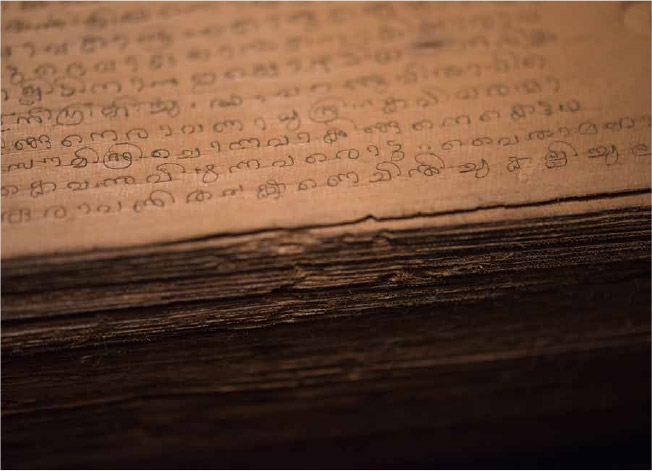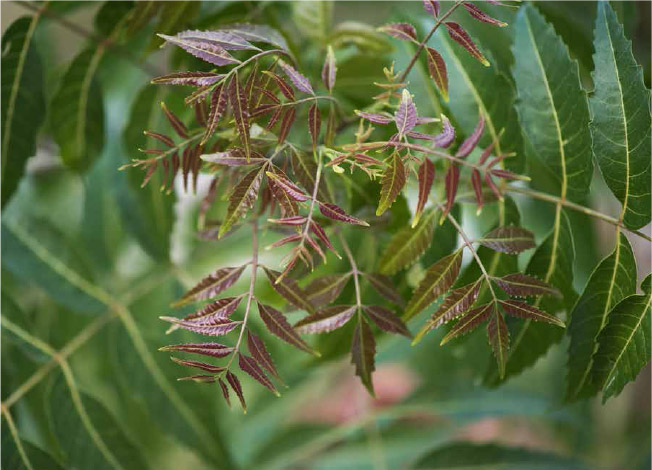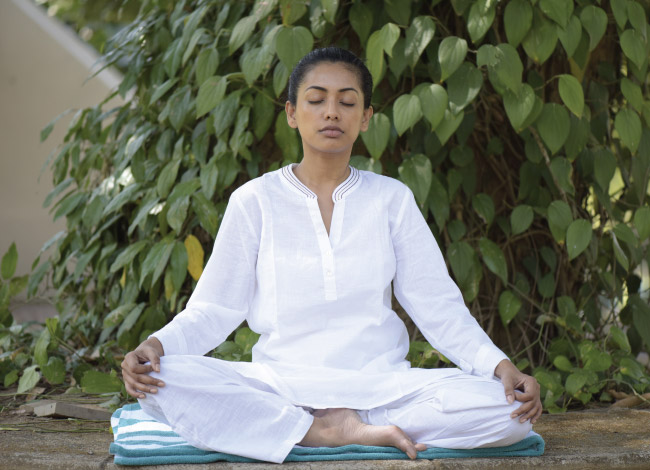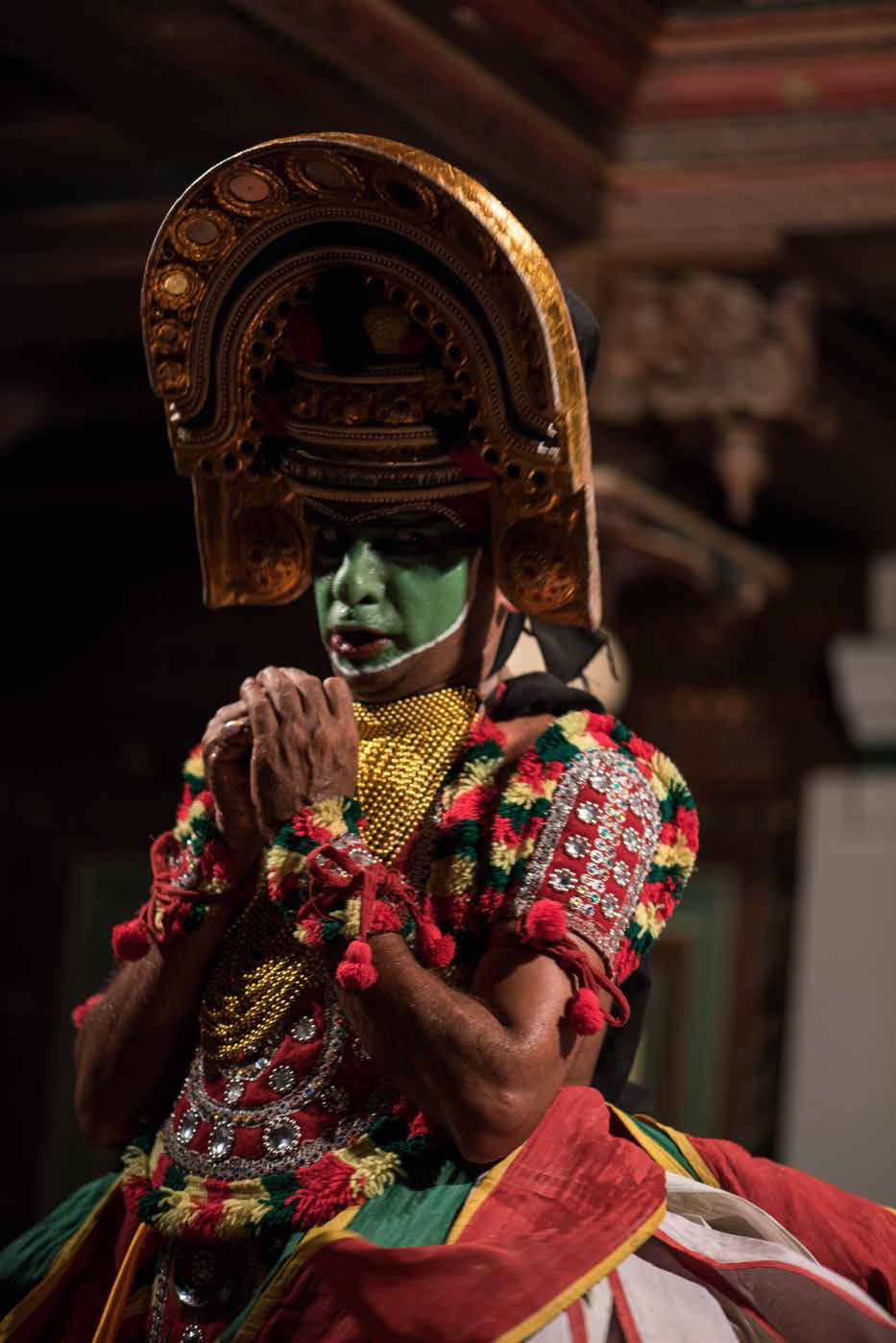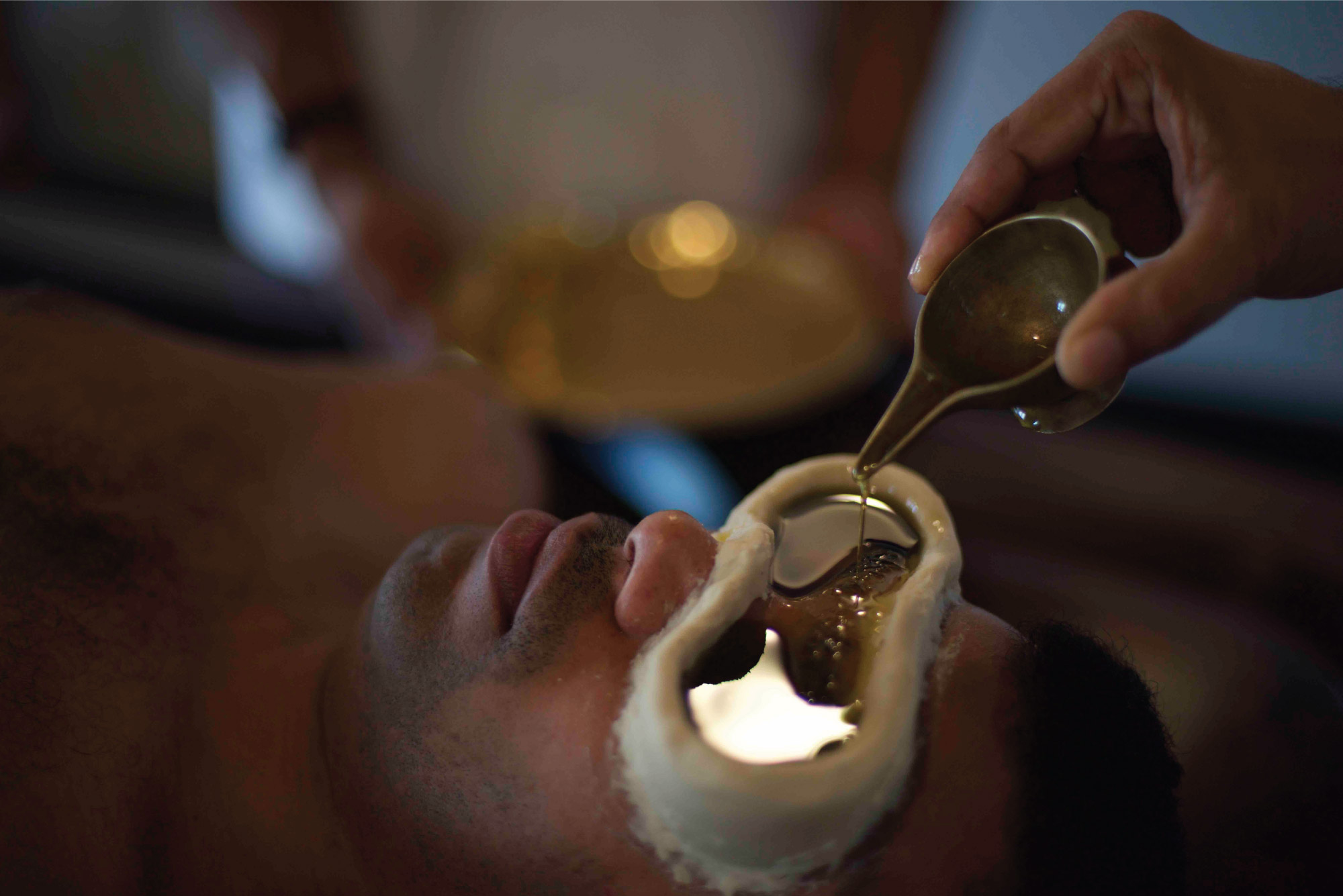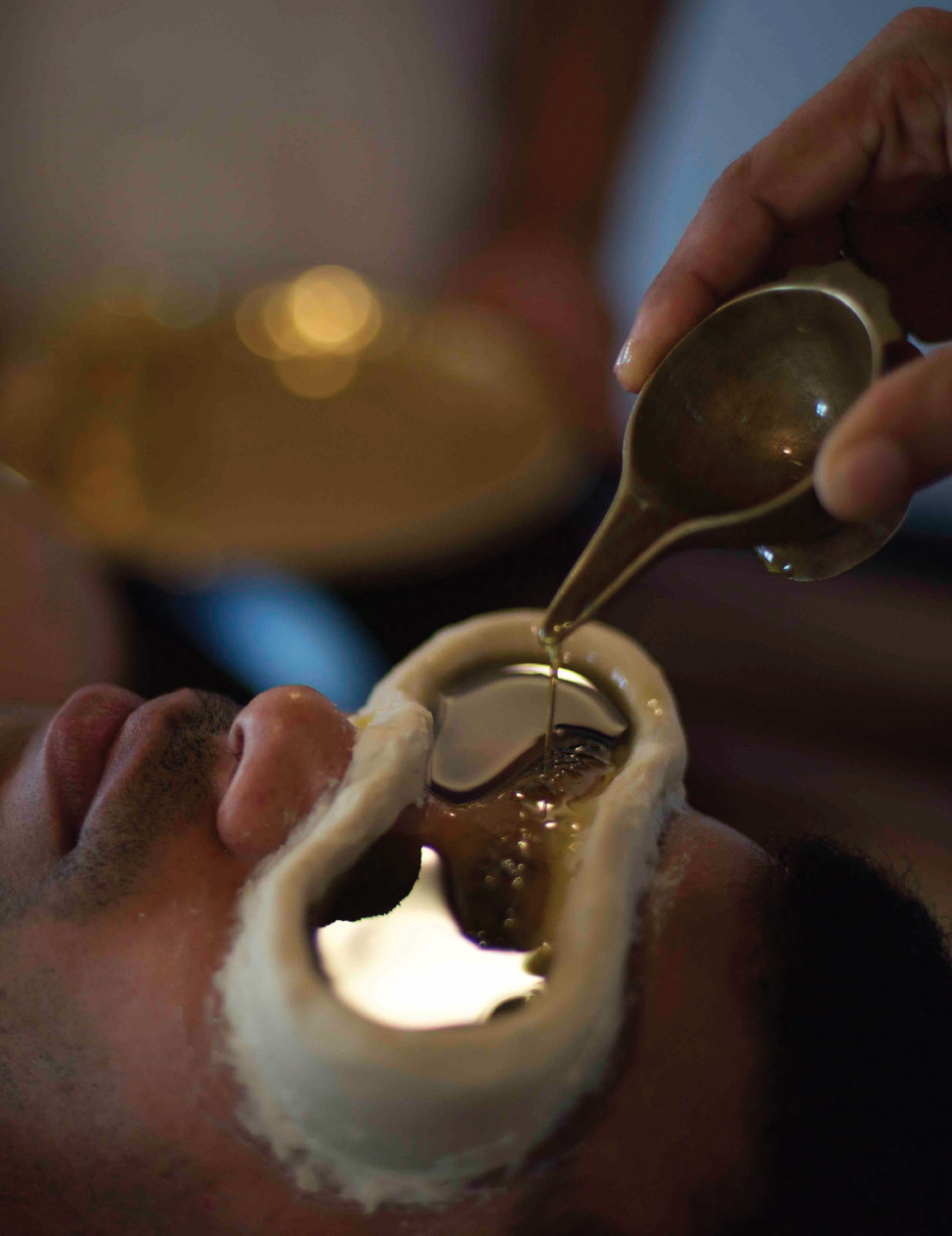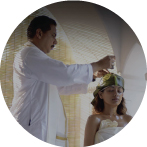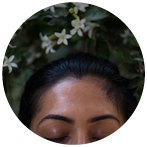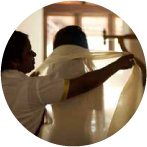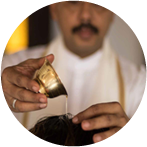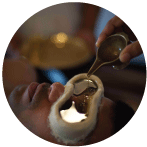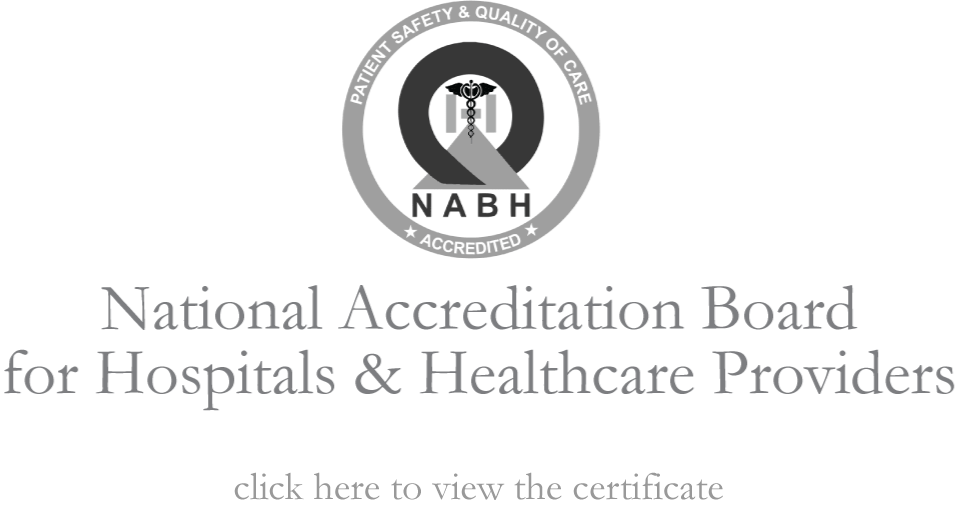Prameha Chikitsa –
Diabetes ManagementDiabetes Mellitus
For Diabetes, there is an entire chapter in Ayurveda for this called Prameha. In our view point, there are phases in DM initial Kapha phase where exercise and diet matters, second the middle pitta phase where there are inflammatory changes and later the Vata phase where neurological problems commonly manifest. Depending on the type of Prameha, we do appropriate treatment.
Hrudroga –
Cardiovascular disordersAtherosclerosis, arteriosclerosis, hyperlipidaemiaThough these problems are classified under vascular disorders, in Ayurveda this attributed to medo dhathu (Fat tissues) problem and srothas (channels) blockage. Depending on the problem medicines will be given to correct the lipid metabolism and to ‘clear’ the vessels. It should be noted that the disease is manifested in the heart or the blood vessels but the actual problem started with digesting and metabolism. In the managing cardiovascular diseases, diet and lifestyle definitely plays a major role apart from medications.Post Cardio vascular disease careIn post cardiac disease patients, changes occur in many areas starting from heart, physical, mental and social. We try addressing issues which can be manged in a phased manner.Atherosclerosis, HypercholesterolemiaThese conditions are similar medo dhathu – (fat tissue) increase in Ayurveda. There are herbs which will help to reduce the adhesion to blood vessels and improves the cardiovascular conditions. The treatments you undergo here is the precursor for the lifestyle changes you need to maintain back home.Hypertension,For hypertension, the treatment varies based on the possible cause. General line is to correct the vata flow and to remove ‘obstruction’. It also focus on three marmas (Vital parts) – Viz., The heart, Bladder, and head.
Annavaha srotho dushty –
Gastro intestinal disorders
Abdominal Colic, bloated feeling and discomfortIn Ayurveda, abdominal discomfort is caused due to factors like agnimandyam (low digestive power), udavartha (kind of blockage), dysfunction of samana and flow of Apana Vayu, unregulated Dietary habit. This condition is also indicated in Gulma (bloated feeling) and Arsas (Haemorrhoid) disease. In managing such conditions, first the cause has to be identified, proper augmentation of Agni is done, followed by regularising the functions and flow of Apana Vata, and Dietary Modifications are brought about. Treatment also requires follow-up medicines. In Ayurveda most of the diseases origin from improper digestion.
Gastritis and Gastro-oesophageal reflex diseasesGastritis is mainly caused by disturbance in qualities of pitta which leads to disturbances in its functions which then produces symptoms of gastritis. In Ayurveda it can be co-related to conditions of Gulmam and amlapitta due to involvement of Pitta and Vata. The management lies in controlling the disturbed qualities of Pitta and Vata by employing medicines that help reduce Pitta and Vata and also by avoiding Pitta increasing dietary products. In some cases meditation and yoga techniques are helpful.Dysentery and diarrhoeal diseases.Dysentery and diarrhoea are commonly correlated to diseases like Atisara and Pravahika. In this condition, there is mainly vitiation of Agni (fire), Pitta and Raktha (blood) and Kapha. Treatment mainly lies in, clearing the ama (“toxins”) from the system, improving the agni, sthambanam (blockage) the flow of blood and mucous, Kapha. Treatment protocols mentioned in Rakthaatisaram (haematochezia) and Pravahika are employed. Diet specific to the conditions are planned. In disorders related to alimentary canal, the line of approach is to improve the digestive and absorptive power of the body.DyspepsiaIt is known as Ajeernam in Ayurveda and has various causes. Primarily being improper dietary habits which include inappropriate food at inappropriate time and frequency. These along with factors like stress, anxiety and these factors disturb the functioning of Agni (fire) the core entity responsible for digestion, metabolism, and assimilation of food. Along with agni the doshas also go out of balance. In modern parlance it is divided in to Ulcer and non-Ulcer Dyspepsia, the former is treated on the lines on Vidagdha Ajeerna, amlapitta and Jwara. The latter one is treated on the lines of Gulmam, pacifying increased Vata and Kapha; in both the cases improving the Agni is the key. Piles – Haemorrhoid Piles in Ayurveda is correlated to Arshas, which are caused to due intake of incompatible dietary foods, suppression of urges, injury to anal region, straining in the rectal region, defect by birth etc. these factors disrupt the Agni which vitiates Vata, Pitta and Kapha; which after localising in rectal region causes disturbance in properties of Raktha (blood), Mamsa (muscle) and Medas (Fat) elements which results in formation of growths in anal region. They are of different types depending on predominance of Dosha and this is also classified into bleeding and non-bleeding piles. The management lies in removing the impurities (shodhanam –cleansing, only for those who are fit for “cleansing”) from the system, samananam and bringing about vatanulomana by using medicines and diet as per the condition.
Please note: Surgical methods like Kshara sutra and agnikarma is not done hereIrritable Bowel syndromeIBS is mainly correlated to Grahani in Ayurveda mainly caused due to disturbance of a functional organ called Grahani which has many functions related to digestion. Along with disturbance in Agni (Fire), these affect the bowel movement in frequency and texture. Mental stress or anxiety has a major role, which influences Vata and Pitta. Treatment mainly revolves around strengthening the functions of Agni and Grahani and Dostha using medicines which are Grahi (holding property) in nature. Addressing the mental causes with necessary interventions.Ulcerative colitisIt can be correlated to Pitta/Rakta Atisaram (Haematochezia), Pitta Kapha Grahani in Ayurvedic view. This is caused mainly due to Vitiation of pitta, Vata which causes inflammation of colon, the treatment lies in reducing Vata and pitta along with Vrana Ropana (healing )Peptic UlcerCorrelated to Parinama sula/Annadrava shoola, caused due to Pitta and Kapha Vitiation which alters the properties of Pitta and Vata in the GI system its causative factors include intake of Pitta and Vata misbalancing diet and lifestyle. Treatments lay in Vrana Ropanam (ulcer healing) medicines, Pita and Vata pacifying medicines. Post treatments here drug therapy of 3 to 6 months also recommended. In some conditions Panchakarma treatments may not be indicated.
Kamila and Yakruth vikara –
Liver disorders
HepatitisThe hepatitis and related diseases comes under the term Kamala in Ayurveda. Kamala is a disorder mainly of Pitta origin affecting the movement and functions of gastro intestinal and systemic levels. The treatment protocol for Ayurveda calls for Virechanam (purgation) and reduction of Pitta and associated factors of Kapha and Vata, in general, liver cases in Ayurveda depending upon the chronicity and Aetiological factors carry a fair prognosis. Post treatment also requires follow up with internal Medications.
Fatty liverFatty liver is a condition caused due to increase of sneha (oily) qualities in the body, caused by disturbance in Medo Dhatu (fat tissue), due to Mandagni (low metabolic Fire). It is clinically a condition in which Kapha qualities increases in the domain of Pitta. Treatment includes bringing about Rookshana (increasing dry qualities) and Pachana (improving metabolism) to reduce Kapha and to correct Pitta. Panchakarma can be done based on the condition.
Swasanavaha srotho dushty – Respiratory Diseases
Asthma, Bronchitis and other Respiratory disorders related to Dyspnoea In Ayurveda, Asthma and related breathing disorders are fundamentally caused by the disturbance in digestive fire, formation of Ama (toxic build up) which cause disturbances in respiratory passages and vitiation of Vata and Kapha. The aggravated Vata enters the respiratory passages and dislodges the Kapha which leads to Vata to constrict the airways, at the same time there is an increased production of Kapha from the locations of Kapha. There are different types of Shwasa (Breathing disorder) mentioned in Ayurveda depending upon the predominance of Vata, Pitta and Kapha. Management lies in taking out the excess Kapha from the system, controlling its over-production, clearing off the Ama, regularising the flow of Vata, strengthening the lung and correcting the diet according to dosha Involved. Panchakarma procedures are generally indicated. Prognosis depends on the age and chronicity.
Mootravaha Srotho dushty –
Urological DisordersSpasmodic painful dysuria Muthrakrichram – painful micturition due to inflammation. Line of approach will be Udawartha Chikthsa (removing blockage). Post treatment follow up also requires internal medicine for few more months. Benign prostatic hyperplasia Vata asthila – Benign enlargement of prostate gland that can make urination difficult. Mutraghata (dysuria) and mutrashtila (literally means stone like blockage) are done. Renal stone Asmari – (stones) are subdivided on the basis of Dosha predominance. In many cases cure lies in continuous taking of medication diet correction.
Vata Vyadhi – Neurological disorders
Facial paralysis, Palsy.This is correlated as Ardhitha in Ayurveda. A division of Vatha called Prana, Udhanaa and Vyana are affected in this disease. Treatment line is mainly to reduce Kapha- Vatha disturbance. Treatment procedure like Sirovasthy, dhara and Nasya are done. Prognosis: within 1 year of onset better results are seen, but there are variations from patient to patient. In some, a follow up treatment after 1 year is required.Diabetic Neuropathy A type of nerve damage due to diabetes. It is caused by blockage to Vatha. Line of approach differs based on which is the Avarana (covering/ blockage) factor of Vatha, Kapha , Pitha, Medha (fat), Raktha (blood) and Mamsa (muscles). So in the Ayurvedic viewpoint it is having three dosha imbalance, and needs long term treatment. Firstly we correct Agni (fire) according to the dosha status. Local and systemic treatments like Udwarthanam (powder massage) Abhyangam (oil massage) , Pizhichil, kizhi and vasthy are helpful.
Burning Neuropathy – Characterized by burning sensation, especially in the feet. Daha (Burning sensation) is the Ayurvedic correlation for this disease. Line of approach, Vatha vitiated by Pitha. Pitha reducing treatments are very effective for this condition along with concentration to increase the digestive fire. Prognosis is depending on the cause, age and body type of the patient.
Multiple Sclerosis (MS) A progressive, degenerative, chronic, autoimmune disease affecting the nerve fibres in the central nervous system (brain and spinal cord,) We do not have exact correlation for MS in Ayurveda, but the demyelination indicates reduction in dhatu agni (tissue level metabolism) and we try to improve dhatu agni, avarnahara (removal of “blockage”), reducing vatha and in later stage rasayana chikitsa (recuperative treatments). This condition requires long term treatment plan. The patient may need repeated visits to the hospitals in six months or one year time period.
Motor Neuron Disease (MND)
These are a group of neurological disorders that selectively affect motor neurons, based on the lesion ALS, PLS, PMA etc. The treatment protocol and prognosis depends on the lesion and mostly on clinical manifestation. The objective of the treatment is to improve tissue level metabolism firstly, avarnahara (removal of ‘blockage/ covering’), vatha alleviating and towards later stage rasayana chikitsa (recuperative treatments). This condition requires long term treatment plans. The first visit helps to assess the condition of patient and based on that, follow up treatment are required as recommended by the Doctor.
Paralysis happens when the impulse through the nerves is not generated or when generated it is not executed. Paralysis due to stroke happens when blood flow to the brain stops. It may be ischemic stroke or haemorrhagic stroke, Pakshagatha is the Ayurvedic term for Hemiplegia. Depending up on the type and site of lesion and age of the patient, the prognosis and line of approach will change. Needs long term treatment, and the advice would be to take 21 days treatment first, and do a follow up treatment afterwards as per doctor’s advice. The treatment focuses on improving the response to nerve stimuli, improving the tone or reducing the spasticity of muscle and joints. Yoga techniques and meditation to boost the mental strength will also be practiced.
Parkinsonism/Parkinson’s
A degenerative disorder of the central nervous system that often impairs the patient’s motor skill, speech and other functions. In the Ayurvedic view point it can be correlated as kampha (tremor), stambha (rigidity), cestanasana (bradykinesia) which are described in different context and not clubbed as part of one disease, It can also correlated as kambha vatha which is a vatha disorder. Vatha and kapha reducing treatment is the main approach and agni deepen (Improving cellular metabolism), avarangna (reducing metabolic ‘blocks’) and rasayana (restorative) treatments are done as per the condition. A long term treatment plan is necessary. The patient is advised to come for the first set of treatment and then based on the response further treatments are planned.
Trigeminal neuralgia – Severe paroxysmal ,sudden lancing pain due to the disorder of fifth the cranial nerve which is increasing in hot climate. According to Ayurveda it is due to the increase in chalathwa (motility) and seetha (cold) qualities of vata in the head. The treatment focuses on vatha pacifying and reducing the Kapha influence
Sleep disorders Insomnia – difficulty to initiating and to maintain sleep or both. Ancient texts describe sleep as one among the three pillars of life. This caused by either Vata or Pitta Disorders. The treatments and medications literally try to cool the mind of the patient. Relaxation techniques and meditation is highly helpful for such patients. The diet tries to makeup some of the essential elements which are generally missing in patients with sleep problems.
Dementia – slow progressive decline in the mental function in which memory, thinking, judgment and the ability to learn are impaired. Smrthibhramsa is the Ayurvedic term for dementia. In this condition the divisions of Vata prana ,udana and vyana , the sadhaka division of pitha ,Avalembaka and tharpaka division kapha ,rajas and thamo doshas are all vitated. The treatment protocol entirely depends upon the patient’s condition.
Nerve Entrapment Syndrome/Sciatica Caused by injury of compression of sciatic nerve. It is termed as Grudhrasi in Ayurveda, The treatment focus on Kapha and vatha reducing followed by only vatha alleviating treatment. Prognosis depends up on the duration of onset.Other entrapment disorders are treated based on the nerve involved and the general condition of the patient.
Restless Legs Syndrome characterized by unpleasant sensation in the leg and an uncontrollable urge to move at rest, in an effort to relieve these feelings. According to Ayurveda there is a vatha increase in vatha seats and need vatha reducing treatment.
Ataxia – Lack of muscles control in the arms and legs, resulting the lack of balance and disturbance of gait. According to Ayurveda ruksha (dryness),calatha (motility) of vata is increased in the majja dhatu (Tissue which nourishes bone)causing Kapha reduction. Line of approach will be vata pacifying with ushan veerya (hot qualities) drug followed by madhura rasa (nourishing quality) drug.
Neuromyotonia Caused by electrical activity of peripheral nerve characterised by stiffness, delayed relaxation, fasciculation. Ayurveda says there is a aggravation of rukshathwa (dryness) and sita (cold) properties of vata in mamasa dhatu (muscle tissue). The line of approch in treatments should be to regulate vata and balance mamasa dhatu (muscles tissue).
Sandigata Vata roga & Vata raktha –
Muskulo Skeletal and Joint DisordersLow Back PainBack pain has varied aetiologies, from local injury, inflammations, structural defect, problems with internal organs to psychological reasons. In Ayurveda, most often back pain is associated with perturbed vata dosha. We do different treatments depending on the condition of the patient. In Ayurveda we don’t give any kind of pain killers as such. pain is signal of the pathology underneath so when the pathology is solved, the pain goes.
The treatments may include Podikizhi, Udwarthanam, elakizhi, Narangakizhi, Kadeevasthy, Panchakarma procedures like Kashayavasthy or Snehavasthy.
Rheumatoid arthritis, GoutIn Ayurveda, RA can be considered and Vata Rakatha or amavata depending on the condition or stage of disease. RA is caused by the vitiation of Vata and Raktha- Blood. The cause of this condition starts from ones eating habits to their life style. So the treatments address the current morbidity through internal medicines and external treatments. But the most critical in RA management is to change the diet so that, the blood is not in vitiated state.
Post fracture rehabilitationIn some fractures, there are conditions in which the pain or swelling persist, poor motor function, numbness or paraesthesia, loss of muscle tone etc. Some of our medications help to heal the fracture. Those cases where there is need for physiological correction, Ayurveda can help. Those cases in which permanent anatomical damage happened cannot be managed here.
Treatments mainly focus on correcting the blood and vata dosha. Depending on the case, the treatment varies from that of Vataraktha (rheumatoid arthritis) to that of kushta- skin diseases. In some we need to correct the dhathu pachnam (tissue level metabolism) and in some ‘rejuvenating treatments’ to strengthen the body. Special attention is given to handle mental stress as this is a major cause apart from faulty diet and family history.
Systemic lupus erythematosus/SLESymptoms of this condition are similar that of imbalances in blood and pita, vataraktha (Inflammatory conditions caused by vitiation of Vata and Pitta) and some skin disorders. Depending on the, condition, chronicity and age of the patient, the line of approach may change. In these diseases, diet and life style is a major factor. The treatments may include Panchkarama procedures depending on patient’s condition.
Cervical spondylitis, frozen shoulder, Arthritis of the shoulder griddle.In Ayurveda, depending on the symptoms, the disease can be classified in to conditions called Apabahuka, greevagruha, viswaji. The treatment also varies with problem. Apart from therapeutic diet and yoga the treatments may include Sirodhara, Sirovasthy and Nasya.
Osteoarthritis, Osteoporosis – Both are considered as anomaly in bone Dhathu (tissue). The treatments focus on improving the mobility, reducing the inflammatory process and strengthening the joint. The rate of degeneration can be reduced.
Muscular Dystrophy, MD – Is a group of inherited disorders that involve muscle weakness and lose of muscles tissue, which get worse over time. Depending on the type of MD, duration and condition of the patient, the treatment varies. Ayurveda views it as mainly dhatu agni mandhya (tissue level metabolic fault). First we need to correct internal metabolism, strengthening the muscle, improving the joint mobility. This condition need long term treatment strategies. Generally it is suggested to take 14 days treatment first as a part of assessment, then do a follow up treatment based on the response. The treatments my include panchakarma procedures depending on the patient’s condition. Therapeutic yoga and exercise will also be done accordingly apart from medicated diet.
Anthasrava granthi roga – Hormonal and Metabolic disordersThyroid dysfunctionThyroid dysfunction can be correlated to the Agni (metabolic fire) concept and of pitta imbalance and in some and three doshas imbalance in others. Aim of the treatment is to correct the metabolism to the dhathu (cellular) level with medications and corrective diet. For those stress induced ones, appropriate yoga and meditation techniques will help.
Seethapitta, Udwartha & Koda – Allergic Disorders
Hay feverSome types of Hay fever can be correlated to kshavathu in Ayurveda. It is caused due to disturbance of vata and Kapha, treatment includes improving the immunity, reducing vata and Kapha, avoidance of trigger factors. Dietary advises to be followed in general. Due to the changes in Dosha cycle with seasons, general care and preventive measure to be taken in particular seasons like spring where natural flare up is expected.UrticariaThe disease is caused by Vata and pitta, there is deposition of Ama in blood and lymph elements, treatment consist of removing the Ama and Cleansing the body by Virechanam.
Sthreeroga – Gynec disordersMenopausal Syndrome
Menopausal disorders are treated according to the body type of the patient. In some with excessive Pitta may have Hot flashes, in those with Kapha may gain weight, In Vata dominant may have sleep issues constipation, etc. In some they have combinations of Dosha imbalances. So the treatments are tailored according to the patient’s condition.Amenorrhoea/Oligo menorrhea (Nashtarthavam) is the absence of menstruation — (one or more missed menstrual periods) or scanty bleeding. Cause should be evaluated and treat accordingly. Rajonsasa (Loss of menstruation) or Arthava kshaya (Oligo menorrhoea) treatments are done accordingly. Treatment is needed for 21 days and after that the patient should continue taking some internal medicines.Dysmenorrhea (vathaki,) – Painful menstruation, typically involving abdominal cramps. Cause should be evaluated and treat accordingly. Need vathaki and raktha pushtikara (Blood purifying and nourishing) treatments.Endometriosis is the abnormal growth of cells (endometrial cells) similar to those that form the inside of the uterus, but in a location outside of the uterus. Endometriosis is most commonly found on other organs of the pelvis. Vatha predominant with pacification of Kapha treatments should be done. The treatments line may vary from patient to patient. Polycystic ovarian syndrome – is a problem which means a woman’s hormones are out of balance. Kapha vata hara and srothosodhanana (“channel cleaning”) – Lekhana (Literally means “scrapping”) medicine are given for this and have to continue medicines for three months or more. The Patient may need three weeks of inpatient treatments.
Leucorrhoea (Slaishmiki, Sewda pradhara) – is a thick, whitish or yellowish vaginal discharge. Cause should be evaluated and treat accordingly. Treatments and duration varies from person to person. Diet correction is a key factor in managing leucorrhoea.
Vandyata chikitsa – InfertilityInfertility disorders Infertility (Vandhyata) – cause should be evaluated and treat accordingly. Need treatment for 21 – 28 days and after that they should took some internal medicine. It is preferred both partners should undergo treatment simultaneously.
Oligospermia – (Ksheena sukla ) deficiency of sperm cells in the semen.Treatments aimed to improve potency and quality of sperm should be done. Need treatment for 21-28 days and after that they should took some internal medicine.
In most of the infertility cases, the treatment works in the long run. In some cases follow up visits may be required.
PALANA – Cancer Care and managementPost cancer rehabilitation care.For issues post cancer treatment like Fatigue, Memory and concentration changes, Pain, Nervous system changes (neuropathy), Lymphedema, or swelling, Changes in weight and eating habits, Bladder or bowel control problems, Hormonal changes, Low self-confidence, Depression etc.
Ayurveda can address these issues through Rasayana therapies. Rasayana therapy in simple words means something which enhances the quality of life. So if you are debilitated, this will help you to attain normalcy at the earliest. These types of treatment are chosen as per the condition of the patient. The treatment is delivered through internal and external medicines, treatment procedures like massages, diet, especially medicated dishes, yoga for the mind and body.
Preventive careThe essence of Ayurveda is the prevention of disease and enhancement of one’s health. The daily routine, seasonal routines, diet tailor made to individuals requirement and periodic “cleansing’ or ‘metabolism correcting” treatment regiments mentioned in the ancient texts as told by the sages with their lifetime experience, which also stood the test of time will definitely help.
Punarnnava – Mental Health and Post de-addiction Rejuvenation
Mental Health and Post DE addiction Rejuvenation:
Depression,
Obsessive compulsive disorder
Anxiety Disorders, Mood Disorders
Post De-addiction Rejuvenation
These disorders are treated under Manasika rogas (diseases related to mind)
In these conditions we give medicines to correct the mental disturbance but also we do treatment to correct the possible changes happened in the body due to prolonged stress and medication.
Please note only those patients who doesn’t pose threat in any kind to other people shall only be admitted here. We also recommend having a bystander along with such patients.
Sleep disorders Most of the sleep problems are due to Vata or Pitta disorders. Excessive sleep is a Kapha disorder. Treatment line changes with each patient. There will be internal medicines, external treatments and appropriate diet, yoga and meditation techniques.
Geriatric Care – Healthy agingIn Ayurveda, Strong “cleansing” treatments are not indicated for the aged especially after 70 years. The Problems, faced by aging people ranges from Memory issues, Arthritis, Weakness, Digestion problems, neurological conditions, depression in some. Depending on that patient’s age and problems, we make treatments to improve the quality of life. This includes internal medicines, external treatments, diet and therapeutic yoga.
Twak Rogas – Skin disordersSkin, according to Ayurveda, has seven layers. It extends itself to the deeper levels of the body. It is said your skin reflects your blood quality. For these reasons skin diseases have deeper causes. That is, most skin diseases are, rooted deeply into various dhatus or tissues like fat, muscles, blood etc. The cause of skin starts from genetic problem which are dictated by food and lifestyle of ours as well as our ancestors.
Psoriasis, eczema. Ayurvedic treatment for psoriasis includes a strict diet regimen and medicines. These are combined with Panchakarma procedures that cleanse the body
Dermatitis, as skin disorder, which can affect all age groups. It is caused due to the vitiation of all the three doshas – vata, pitta and kapha. Vitiation of Pitha and raktha (blood) mostly produces eczema.
Our approach in manging skin diseases varies from patient to patient. If two persons are having same diagnosis from the contemporary medicine’s point of view, our treatments may vary depending on individual’s conditions. We have primary tenfold assessment criteria to come to a diagnosis and treatment.
Please note: we haven’t listed all skin conditions as Ayurvedic diagnostic criteria are different and prognosis also differs. If you need any assistance please contact our doctor.
For patients who have more than one issue to address, the Vaidyas will decide the appropriate treatment protocol. For conditions which are not listed here, please contact our Vaidya to know the healing prospects. We do Panchakarma procedures only in those patients who are fit for that particular Panchakarma procedure as per the guidelines dictated by classical Ayurvedic text books (Ashtangasangraha, Charaka samhitha and Susrutha Samhitha) Bedridden, wheelchair bound and critically ill patients cannot be treated here.
